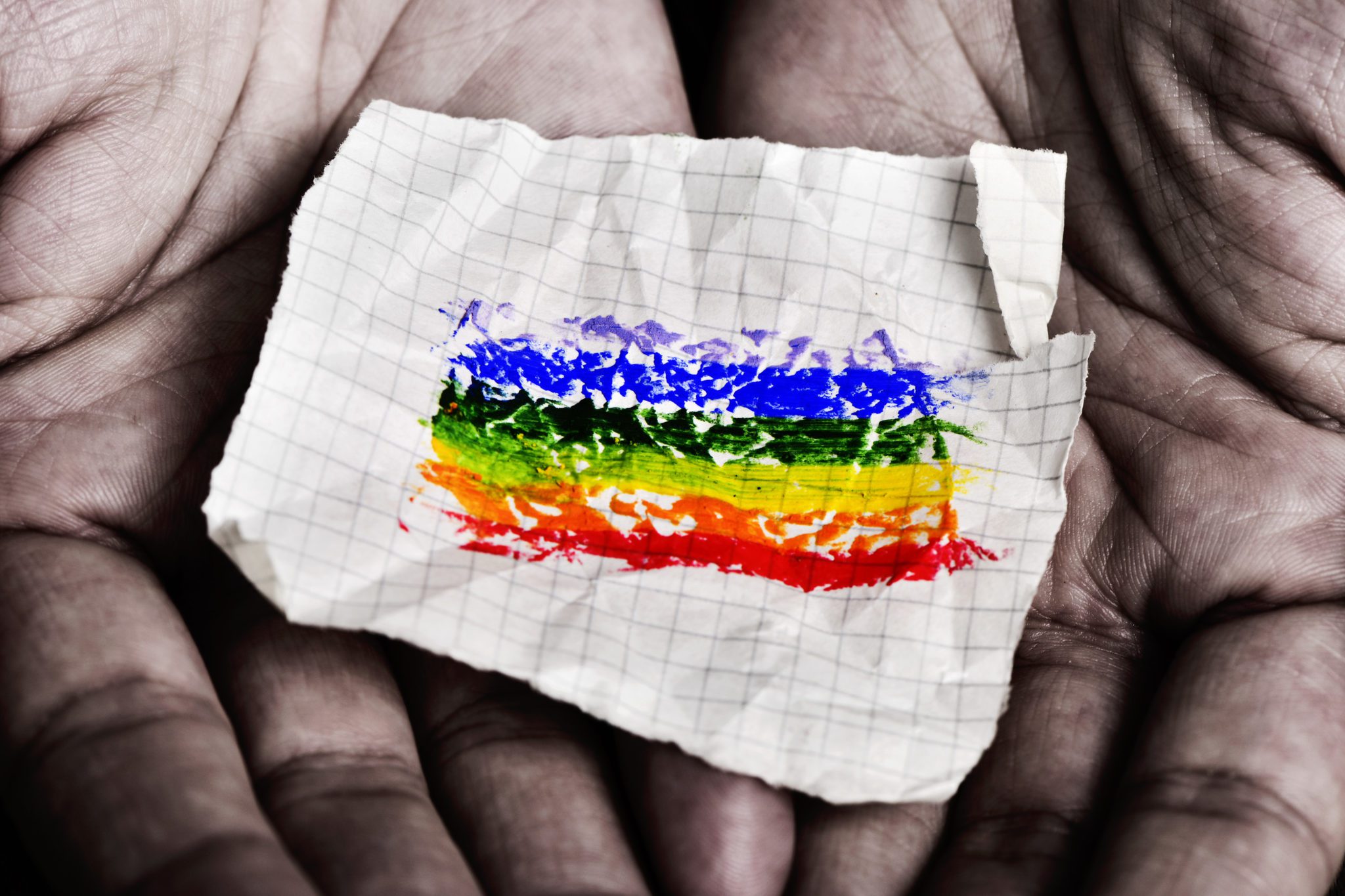Exploring Gender Dysphoria
Posted in: Grade School, Hot Topics, Pre-School, Teenagers
Topics: Child + Adolescent Development, LGBTQ+
Note: On May 25, 2019, the World Health Organization approved revisions to the 11th edition of its Classification of Diseases (ICD-11) to move gender incongruence out of mental disorders and into sexual health conditions. The rationale being that while evidence is now clear that it is not a mental disorder, and indeed classifying it in this can cause enormous stigma for people who are transgender, there remain significant health care needs that can best be met if the condition is coded under the ICD.
It’s sometimes dizzying to look at exactly how far we’ve come in our acceptance of gender identity issues.
This movement has been fueled by a complex and fast-moving series of events, including groundbreaking shows like Amazon Prime’s Transparent, the transformation of Bruce Jenner into Caitlyn Jenner, and a corresponding effort to recognize the fluidity of gender identity and sexual orientation within public settings. Perhaps most importantly, there has been an increased willingness to acknowledge that gender identification is not the same as sexual orientation.
Language and Gender
In a strange way, language itself gets bogged down in the midst of cultural change. As a former English teacher from a different generation, I stodgily cringe when I see a plural pronoun referring to a singular subject. You know what I mean. When I was teaching, I would have taken points away for a sentence that read:
“That red-headed individual wants their tickets to the show now.”
“Individual” is singular; “their” is plural. Hence my faulting the grammar.
But, there’s a good reason that sentences like the one above are increasingly accepted. That particular phrasing preserves the gender neutrality of the subject. The individual could be a “he,” a “she,” or someone who is unsure of their gender identity. Most importantly, the writer can’t be sure of the gender identity of the subject. For that reason, many feel that we should choose to use the plural pronoun “their” as a means of avoiding assumptions.
This can all seem pretty high-brow, but if you’re a 15-year-old teen and you feel unsure of your gender identity, these kinds of sentences can be the difference between feeling welcome and feeling left out. And, at the end of the day, a good number of people feel at least some gender dysphoria—that is, that they are not entirely comfortable with their biological gender. This happens most often during adolescence, at least according to current studies.
Follow Vega’s story above in our short film “Self-Care in Middle School.”
What Is Gender?
That begs some important questions. When I was discussing this issue with my father last month, he asked what to him seemed like a very reasonable question.
“What,” he pondered, “is the absolute and scientific distinction between genders?”
He wasn’t trying to be provocative. He just felt stymied in his attempt to classify gender given the current tectonic cultural shifts that are taking place.
It turns out that that the answer to his inquiry is hardly straightforward. Rather than get into a deep and confusing philosophical debate, let’s go over some definitions that are more or less accepted among clinicians. Remember, however, that within these definitions, there is room for interpretation amidst our rapidly changing landscape:
- Sexual orientation: A person’s inherent or enduring tendency toward consistent romantic or sexual attraction to a specific gender.
- Gender identity: A person’s private (meaning their own) and subjective experience of their own sex. In this sense, sex is a noun that roughly equates to gender. If someone identifies as male, then that person experiences himself as male.
- Biological gender: This is a person’s biologically classified appearance and/or chromosomal makeup that happens to be consistent with accepted biological states of male or female. Strictly speaking, if the sex-linked chromosomes within an individual are XY, that person is male. If those same chromosomes are XX, that person is female. However, remember that if you choose to use chromosomal status alone, you leave out varying chromosomal states that do not conform to the XX/XY dichotomy. For example, XXY individuals tend to appear more physically male, but also have some female physical characteristics. This kind of classification gets murky fast, and speaks to the difficulties in a strictly dichotomous coding of gender.
So right away, you can see where things may get confusing. Gender identity and sexual orientation are fluid throughout development. Whereas many individuals will feel confident in their sexual orientation and gender identity from an early age, for others, these concepts will shift and change. Add to this the shameful history within psychology and psychiatry of considering these kinds of shifts abnormal and pathological, and you have a recipe for understandable hand-wringing among those individuals who are unsure of either their gender identity or sexual orientation.
Again, language can help us to understand the potential complexity here. Given the fluidity of these issues, one could, for example, be a chromosomal female who identifies as a heterosexual male. That person would therefore be attracted both romantically and sexually to females, think of himself as male, and dress or not dress as male.
Gender and Resilience in Kids
Perhaps the best approach, therefore, is what we like to think is the obvious approach. The Clay Center focuses on resilience, and a key factor in resilience is the capacity to remain flexible in the face of complexity. If children and adolescents feel able to talk openly and without judgment to their parents about their feelings on both gender and sexuality, they tend to do much better. This has been shown time and time again through countless research studies (click here and here). Importantly, as you’ll note in these two references, an absolutist or purely psychopathological approach to gender and sexuality is never helpful—and can often be harmful. These are, understandably, sensitive topics.
Here are some general guidelines:
- Some toddlers will, from a very early age, show a desire to dress according to the gender norms that do not correlate with their biological gender. Little is to be gained by not allowing this. Other toddlers are rarely bothered by the little boy who chooses to wear a dress to preschool, unless, that is, the adults are bothered by the little boy who chooses to wear a dress. Over time, that boy may or may not want to keep wearing dresses, but a strict prohibition against this behavior will likely cause shame and distrust in the little boy with no discernible benefit.
- As children age, they become more aware of gender expectations. It is not the purpose of this post to argue the extent to which gender itself might or might not be a social construct. Suffice it to say that the prevailing culture has within it an understanding of how males and females behave, and that there are expected differences. It isn’t fair to a child to raise him or her as if they are themselves genderless unless that child desires a genderless designation. And, given the extent to which this kind of ambiguous designation will potentially be stigmatizing, it makes sense to be available and understanding for the emotional pain that more stark uncertainty with regard to gender can yield.
- Remember that the world is changing. People are substantially more accepting of differing gender identities than they were even a short while ago. Still, experiencing discomfort with one’s biological gender—gender dysphoria, in other words—is a tough road for any child. If your child is experiencing gender dysphoria, be prepared to listen, to reserve judgment, and to ask for professional help. The help recommended here isn’t to force the child to rethink their position; it is to aid with the host of psychological problems that have been found to accompany these kinds of difficult issues. Depression, anxiety, trauma, and substance use disorders have all been found to be higher among transgendered or unclear-gender-identity children than among the general population.
Above all, remember that identity itself is nowhere near as fixed a psychological state as much of our prevailing culture would have us believe. We continue to form who we are and how we feel about ourselves, including how we feel about our gender and gender identities, well into adulthood. Don’t expect anything to be written in stone; such rigidity is a recipe for misunderstanding and disappointment in parents and children alike.
Be as curious, accepting, and understanding as possible. That’s the best approach.
Was this post helpful?
Newsletter
Subscribe Today
Your monthly dose of the latest mental health tips and advice from the expert team at The Clay Center.
SubscribeMultimedia
Quick Jumps
Tag Cloud
-
addiction
ADHD
adolescents
anorexia
anxiety
autism
behavior
CBT
child development
children
college
communication
covid-19
depression
digital media
dyslexia
eating disorder
evaluation
family
fear
healthy development
learning
learning disabilities
learning disability
mental health
mental illness
parenting
parents
Podcast
PTSD
relationships
resilience
school
shrinking it down
social media
stigma
stress
suicide
technology
teenagers
teens
therapy
trauma
treatment
violence

 Share
Share Tweet
Tweet





